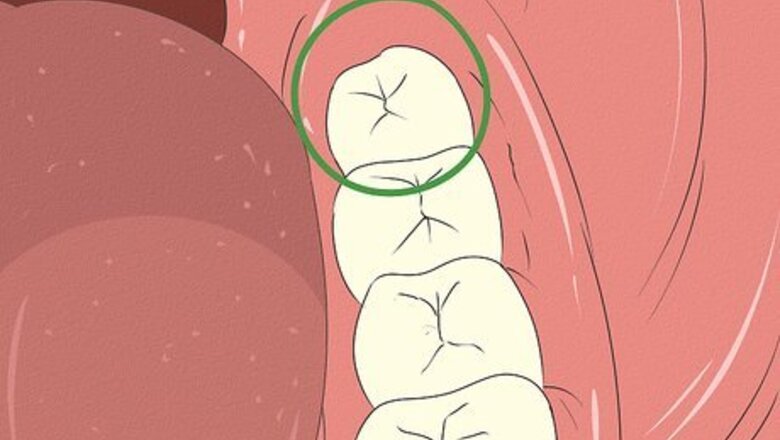
views
X
Trustworthy Source
Cleveland Clinic
Educational website from one of the world's leading hospitals
Go to source
Recognizing Signs of an Erupting Wisdom Tooth
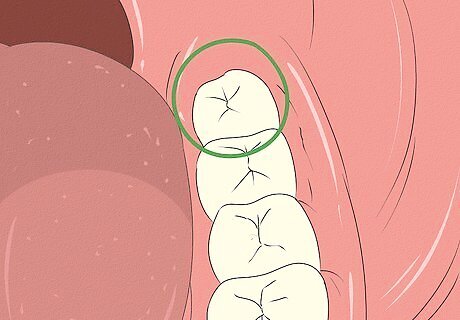
Know where to look in your mouth. Your wisdom teeth are the last molars on each row of teeth — the uppers and lowers on both sides. They are meant for grinding food. You don't need them to chew properly, but they pop up (erupt) when your jaw grows and elongates during your late teen years. Open your mouth wide and use a penlight to see the back of your mouth. They are considered the third set of molars, which are situated five spots behind your incisors or canine teeth. Look to see if there is enough space for another molar to erupt there. Wisdom teeth don't always erupt if there isn't enough space in your jaw. If your teeth are already crowded and/or crooked, then the chances are good that your wisdom teeth will not erupt completely.
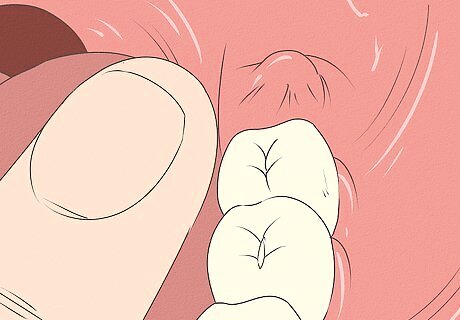
Feel behind your second molars with your tongue or a finger. Once you know where the wisdom teeth erupt, take your tongue or your finger and feel along the gum line. When wisdom teeth (or any teeth) begin to erupt, they begin by poking through the gums. The top part of the tooth, called the cusps or crown, pokes through first.Before the cusps erupt through the gum tissue (gingiva) and cause discomfort, you should be able to feel a hard bump develop in the gums behind your second molars. If your tongue isn't long enough to extend to the back of your gums, then use your index finger to feel around. Sanitize your finger before putting it in your mouth. Your tongue has a tendency to naturally gravitate to any sharp edges or tenderness in your mouth subconsciously, especially if they are new.
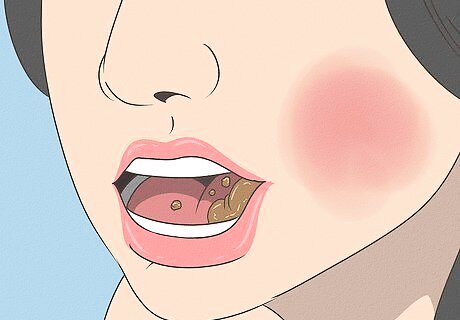
Be alert for gum or jaw tenderness. When wisdom teeth do erupt, you can expect at least some mild discomfort as the cusps cut through the sensitive gum tissue. Be alert for at least some short-term mild pain, pressure or dull throbbing in the back of your gums or in the nearby jaw bone. The pain can be more severe if your wisdom teeth erupt crookedly due to a crowded jaw. On the other hand, symptoms may be almost unnoticeable if the wisdom teeth come in straight and well-positioned in relation to your other teeth. The pain from erupting wisdom teeth will be worse at night if you habitually clench your jaw and/or grind your molars while sleeping. Chewing gum or eating hard, crunchy food can also aggravate the erupting wisdom teeth and lead to worse symptoms.
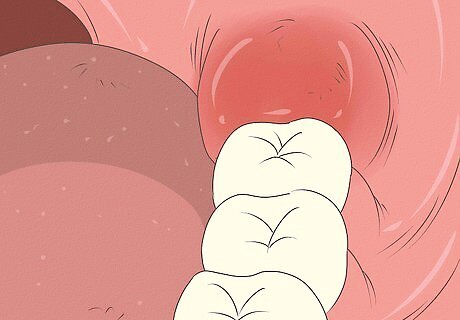
Look for redness and swelling. Wisdom teeth can also trigger redness and inflammation within the sensitive gum tissue. You may be able to feel the inflamed gums with your tongue or see it when your mouth is opened wide. Use a penlight if you need to see better. Red and swollen gum tissue is called gingivitis. Inflamed wisdom teeth make it more difficult or uncomfortable to chew food. In fact, they may cause you to bite your cheek and/or tongue more often because they can crowd your mouth. You might also see some blood around the erupting wisdom tooth (or your saliva may be red colored). This is not common, but it happens. You might also see a "gum flap" over your erupting wisdom tooth — it's called a pericoronal flap. While your gums are swollen, it might be difficult to open your mouth to eat food. This is especially common with the lower wisdom teeth, as the resulting inflammation affects the masseter muscle, which is involved in the opening of the mouth.As such, you may need to drink blended food and beverages for a few days (do not use a straw, as this can lead to dry sockets).

Watch your wisdom teeth grow in. Once the cusps of the wisdom teeth break the surface of the gums, they'll continue to push up until they reach the level of your other molars. This process takes a few weeks or even months and you'll be able to see if the teeth are coming in straight or not. If they do not come in straight, they'll likely crowd the other molars, which can put pressure on and misalign other teeth in the front of your mouth that are visible when you smile. Wisdom teeth that erupt crookedly can create a "domino effect," which eventually affects other teeth, making them twisted or uneven looking. If you think your front teeth are suddenly getting crooked, compare your current smile to older photographs of yourself. Once wisdom teeth are removed (extracted), crooked and twisted teeth can slowly realign themselves naturally after a few weeks or months.
Recognizing Signs of an Impacted Wisdom Tooth
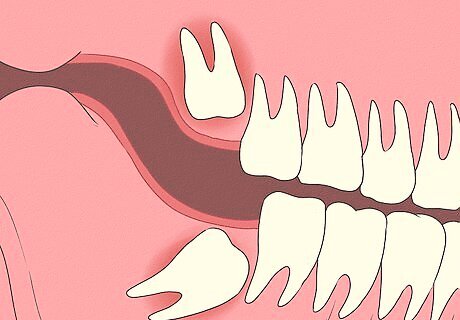
Learn what an impacted wisdom tooth is. Impacted wisdom teeth either don't erupt at all (and remain within the jaw bone underneath the gum line) or they don't erupt normally. They can get stuck under the gum flap or grow in at an extreme angle — sometimes even horizontally instead of vertically. It's important to remember that impacted wisdom teeth don't always cause problems or symptoms, and don't always need to be removed by a dentist. It's common to have a combination of fully erupted, partially erupted and impacted wisdom teeth within the same mouth. The longer your wisdom teeth stay in your mouth, the more developed the roots become, making them more difficult to remove if they cause symptoms.
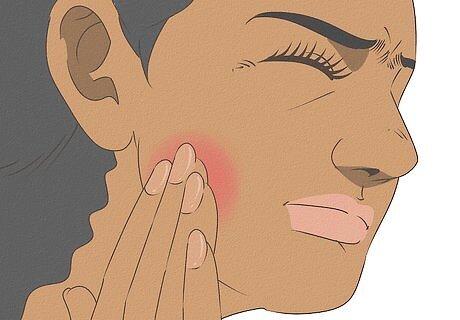
Don't ignore severe pain and inflammation. Impacted wisdom teeth are not always symptomatic, but when they are, the pain and inflammation tend to be severe. Unlike the mild discomfort that sometimes accompanies normally erupting wisdom teeth, the impacted teeth usually produce severe throbbing pain (in the gums and jaw), swelling, headache, neck stiffness, ear ache and/or reduced ability to open the mouth. If you experience these symptoms, it's not a normally erupting wisdom tooth — see your dentist immediately. Symptoms that distinguish erupting from impacted teeth is typically a matter of degree. The latter involves more pain and swelling that lasts longer and doesn't usually get better until the tooth is pulled. The discomfort from an erupting wisdom tooth only lasts while the cusps first push through the gum line, whereas impacted teeth cause pain well afterwards or even without being seen. If your wisdom tooth is not erupting vertically in the normal position, you may feel a constant pain or discomfort spreading all over the jaw up to the middle line.

Be aware of signs of infection. Partially erupted or impacted wisdom teeth greatly increase the risk of an infection, which is called pericoronitis. Impacted wisdom teeth can create little spaces underneath the pericoronal flap where bacteria collect and proliferate. Bacteria can eat away at enamel, bone and gum tissue. Common signs of an infected wisdom tooth are: lots of inflammation, severe pain (sharp and/or throbbing), mild fever, swollen lymph nodes in the neck and along the jaw, pus around the inflamed gingiva, bad breath and an unpleasant taste in the mouth. Pus is a grayish-white color and made from white blood cells. These specialized immune cells destroy surrounding bacteria, then they eventually die and form pus. Bad breath is a product of the bacterial waste products, pus and blood that seeps from an infected wisdom tooth.
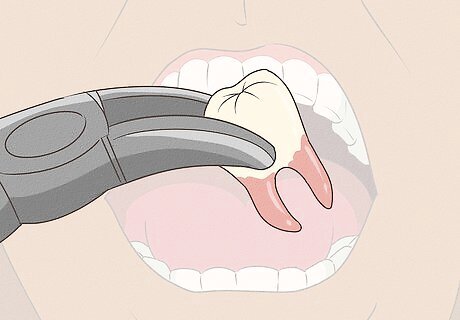
Know when to see a dentist. Experiencing severe symptoms that last for more than a few days or noticing any of the signs of infection warrant an emergency trip to the dentist. Your dentist will take x-rays, administer some anesthesia and extract the symptomatic impacted wisdom tooth. Antibiotics may be prescribed before the extraction to prevent the spread of the infection in the bloodstream. Wisdom teeth removed before the age of 20 years often have better results because their roots are not fully developed. Complications of an infected wisdom tooth include: an abscess of the tooth or gum, cysts and septicemia (bacterial infection of the blood). The American Dental Association recommends all teenagers between 16–19 years of age get their wisdom teeth evaluated by a licensed dentist.













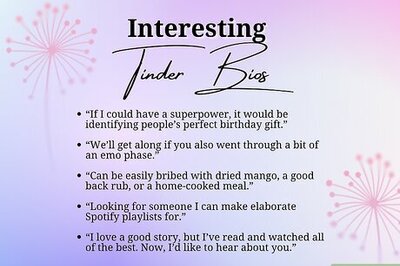
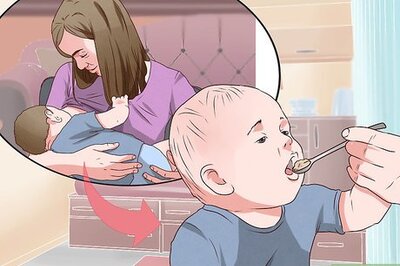

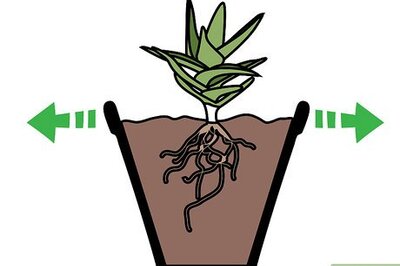



Comments
0 comment